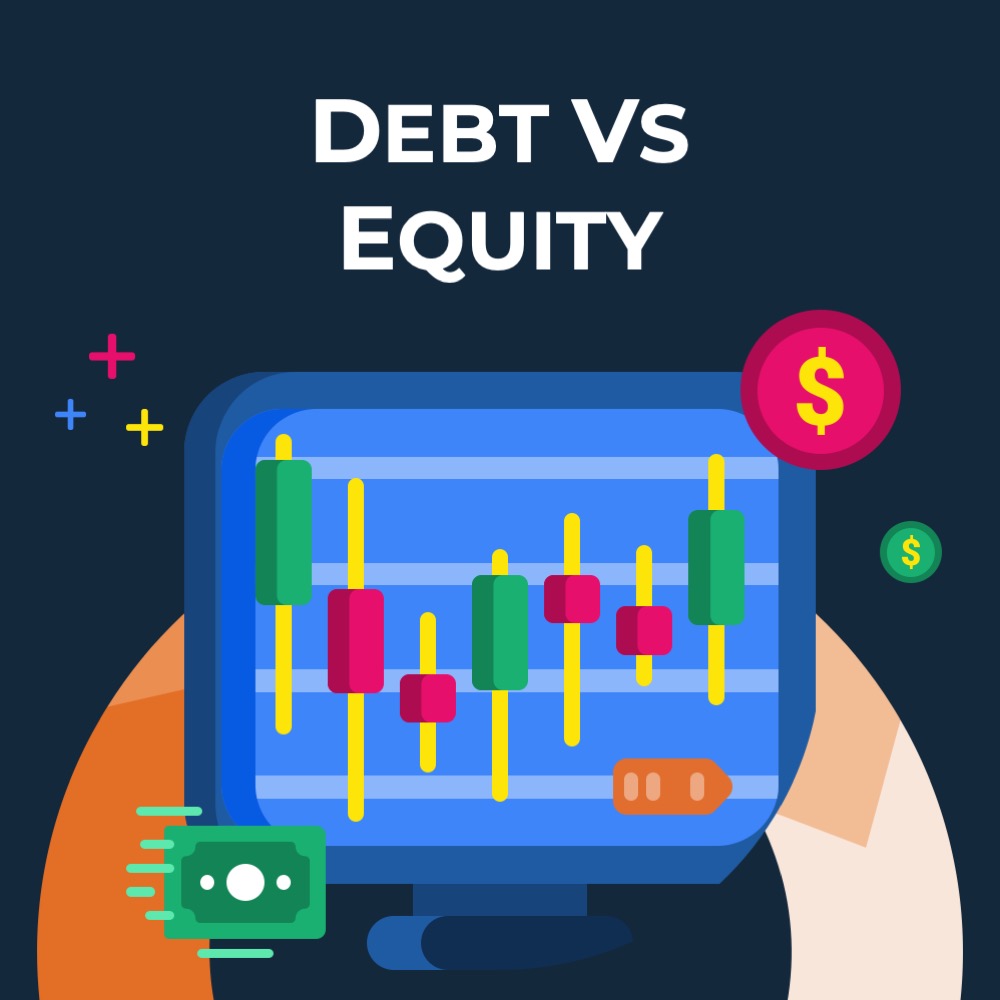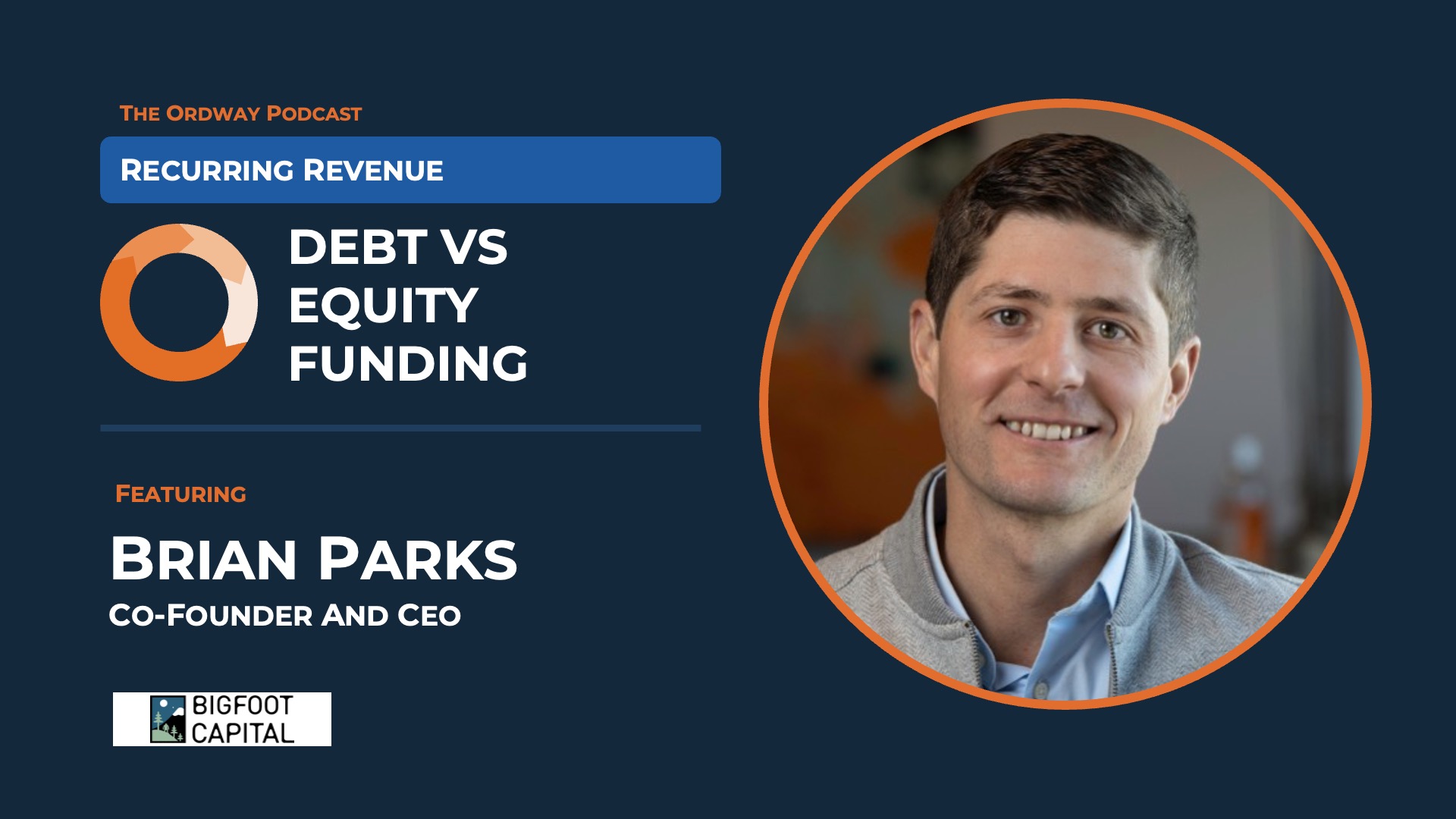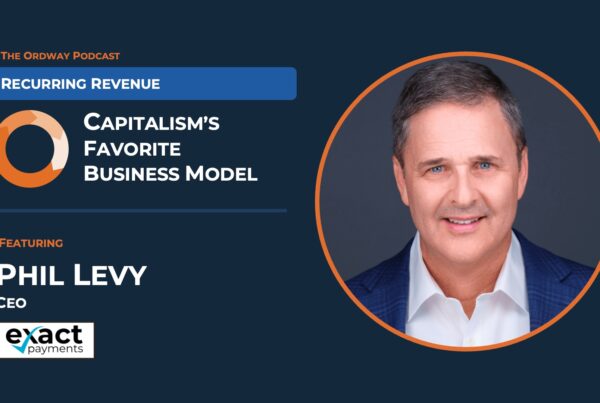
The Ordway Podcast: Capitalism’s Favorite Business Model
Debt vs Equity for B2B SaaS Companies
Brian Parks, Co-Founder and CEO of Bigfoot Capital discusses the pros and cons of different capital structures for B2B SaaS companies with Steve Keifer, CMO of Ordway and host of the Capitalism’s Favorite Business Model podcast series.
Episode Summary
Brian explores the tradeoffs between selling equity to venture capital firms and using debt to fund growth. In addition, he provides insights on the process to raise debt, the financials that are reviewed in the underwriting process, and the ideal ratio of debt-to-equity for different stages.
He also discusses a recent survey Bigfoot conducted of equity and debt firms about the current state of the market and how investors are thinking about deploying capital in the coming year.
What are the downsides to B2B SaaS companies of taking venture capital?
Steve Keifer:
Most of the audience is familiar with the venture capital model and the positives of it, but could you share some of the downsides of potentially giving away too much equity and the dilution impact?
Brian Parks:
So dilution – There’s only a hundred points on a cap table. You can’t expand that and who’s owning it at any given time. If you start a company and you start it with a couple of co-founders and you want to have employees of that company that is a huge bet you’re making at the end of the day on the value of that equity. And I think it you should want to retain as much of it as you can for yourselves and your team as reasonable, right?
What I say is I’m not anti dilution. I’m not anti-selling of equity. I’m anti-frivolity with equity. I think way too many companies become too frivolous with their equity and effectively undervalue it because it’s almost like once you start selling equity, you get addicted to selling equity. You want a higher valuation the next time. You want more money the next time. It’s very easy to fall into that trap, I think, especially if you haven’t fallen into that trap before.
Once you fall into that trap, and recognize it and look back to understand some of the potential negative impacts, you may not do it again. You may not do it in the same way. I think honestly, convertibles and really SAFEs have really contributed to that as well. So those have been deployed for the last decade plus, right? And it’s easier and we should just do this. You don’t have to put evaluation on it. Frankly, investors have pushed that narrative and which probably plays to their benefit.
But at the end of the day, those are dilutive instruments. They’re meant to convert to equity if they’re not equity day one. And so I’ve called that kind of like the convertible note overdose. Like you just kind of get in this cycle of doing it. So that’s really dangerous, it’s dilution. The other aspect of it is really the path that you’re putting yourself on. The bar you’re setting to have successful financial outcome for all stakeholders.
And that is a path that can be very hard to get off. That’s the main thing to me. What we’re trying to foster is successful financial outcomes for the folks running these companies and the folks putting equity capital into these companies. That’s what we’re trying to do with our capital and step into a situation where we still feel like everyone can have financial success. And I think often times over equity capitalizing a company can really compromise that.
What are the advantages of debt versus equity for B2B SaaS companies?
Steve Keifer:
What are some of the advantages of mixing equity with debt? Also, can you explain how the debt financing works?
Brian Parks:
Two potential disadvantages of taking equity are, of course, the dilution and then the path you’re putting yourself on. Inverse of that with that is you aren’t incurring dilution or you’re incurring minimal dilution if there’s some warrants attached for venture debt facilities – not dilutive. AI think you’re not putting yourself on some path that you can’t get off of. The job of the lender is not to over lever you. That’s not lend you so much money that it compromises a healthier company. I’m not saying it’s always the easiest thing in the world to service the debt. We all hope that it’s not that hard to service the debt, right? But I would say if the amount of money lent to a company is reasonable, which everyone should want it to be, it is much less risky a part of your capital structure than the equity, not just for the person providing the capital, but for the company itself. It doesn’t put you on some path that you can’t get off of. You can get the debt repaid somehow, some way. It’s not there in perpetuity. I think people think it’s way more risky to put on to a company than it necessarily is and into the capital structure. The equity is there in perpetuity. You can’t get away from it, right? The only way you can kind of get away from it, you know, if you sell the company and it’s successful, all fine and well.
The only way you can kind of get away from it in another scenario is by recapping the company, which is going to come with a lot of pain often. So long as it’s moderately applied, we never want our capital to back someone into a corner or put them on the path because we are so understanding that again. We want people to have a broad array of potential outcomes available to them. Raise an X equity around, don’t raise an X equity around cash flow the company, sell the company or IPO the company. We don’t want to turn off any option. And our best way of doing that is by not over-levering companies.
What is the process to secure venture debt and how does it compare to the process for raising venture capital?
Steve Keifer:
What’s the process like to raise debt? One of the things that I don’t like about equity is it’s just so time consuming and distracting. It goes on for three to six months and you’re caught up in all these debates about the valuation. It can be a big distraction for the management team. How’s the debt process in terms of timeframe, and what’s involved in it?
Brian Parks:
Venture debt can be a quicker process (than selling equity). I would say it’s still a comprehensive process, though. I’d say six to eight weeks from kind an initial conversation to a funding. If it’s a bank, it’s probably double that, let’s just say, three to four months. Banks are slower. So it’s not the world’s worst process, but it’s also not, we don’t provide kind of click-button capital. And many others, I would say, providing millions of dollars don’t or maybe shouldn’t either. I’d say if you’ve been through an equity raise before, it shouldn’t be a painful process at all to go through say our diligence process or most lender’s diligence processes. You should have your stuff organized; you should have it together. You’ve been there, done that. And you just know what to expect.
What financial statements and operating metrics are reviewed by venture debt issuers?
Steve Keifer:
What types of data needs to be shared with a debt issuer to assess the credit risk and underwrite the loan? Do you need audited financials? Do you need the three statements? What kind of what the operating metrics you guys look at?
Brian Parks:
We don’t need audited financials. Some lenders do. Where we’re generally playing is below $10 million in revenue. Software companies of that size generally don’t have audits. We will start to expect an audit once a company, say, clears that level of revenue. It’s probably a good idea and good hygiene, and you can afford to have an audit. Looking even beyond this debt financing, looking out into the future, you want to show a potential acquirer, what have done. It is to your benefit.
The monthly reporting is pretty straightforward, not overly onerous. We’re not taking a board seat. We don’t take a board observer seat. Somelenders may. We say, look, we like to be informed. We expect to be informed with the information. And if we’re informed, two things, we’re more comfortable, which is to your benefit, and we can probably be more helpful as well. So.
So that’s it, and that’s in the form of financial statements. So hopefully you have an accounting system producing financial statements. Good, get those to us. And compliance certificate, which is like one page. Hey, I’m adhered to my covenants and we can get to covenants and what those look like. And maybe some customer level reporting. So a system like Ordway is great, honestly, because then all that stuff is organized and it is easy to provide. And we can consume it and frankly not bother you.
What operating metrics are most important for B2B SaaS companies?
Steve Keifer:
I know you guys put out a survey recently where you asked a bunch of investors, both on the debt and equity side about just kind of their sentiment on the market and how they’re feeling about things moving forward. What are some of the key learnings from that for the audience? What are the most important operating metrics for B2B SaaS companies?
Brian Parks:
There’s still a lot of capital out there interested in B2B software companies. Ours was focused on B2B software investors, both on the equity side and on the debt side, who ultimately care about the same things and are looking for the same things in their investments at the metrics level. So, you know, what do people care about? Everyone still cares about growth. They do. It is the number one thing that they care about. That is what drives enterprise value, revenue growth for software companies, right? They’re valued as a multiple of revenue. Everyone wants growth. Software companies are supposed to be growing at somewhat inordinately higher rates than all other industries. That’s the promise that is meant to be delivered by software amongst other promises.
The other promise is that the retention profile is there. That’s the beauty of SaaS, right? Once it’s there, it’s effectively in an annuity and it’s sticky and it’s high margin. You’ve got good operating leverage on the expense side.
That is what delivers the value. Those things aren’t there, it becomes much less valuable. So investors with equity that care about the same things in the same order of priority, growth, then capital efficiency manifested as burn multiple, really. Rule 40 can be another thing that’s actually deprioritized. Kind of goes growth, burn multiple, and then retention, net and gross. Those are the three main things.
Frequently Asked Questions
What are the main differences between debt and equity funding for B2B SaaS companies?
Debt funding provides capital without ownership dilution, while equity funding trades company shares for investment. Each has unique pros, cons, and impacts on business growth.
Why should SaaS founders consider debt as an alternative to equity financing?
Debt enables SaaS founders to access funds without giving up ownership or control, avoiding dilution and aligning incentives for long-term company success.
How long does it take for a SaaS company to secure venture debt compared to raising venture capital?
The venture debt process is often faster, typically taking 6–8 weeks, whereas equity fundraising can take 3–6 months due to greater complexity and negotiations.
What financial metrics do lenders and investors evaluate in B2B SaaS businesses?
Key metrics include revenue growth, burn multiple, net and gross retention, and overall operating leverage, as these directly impact valuation and loan eligibility.
Do SaaS companies need audited financials to qualify for debt financing?
Generally, no. Most SaaS lenders do not require audited statements for companies below $10 million in revenue, though audits become important as companies scale.
Recent Blog Posts







